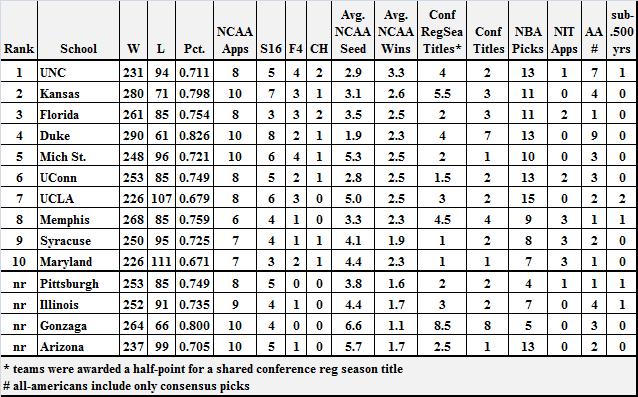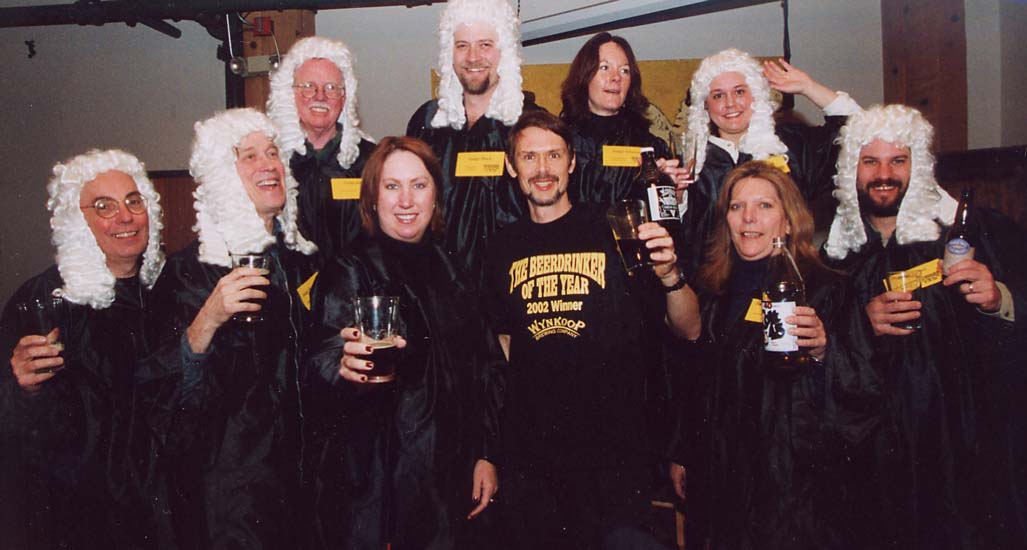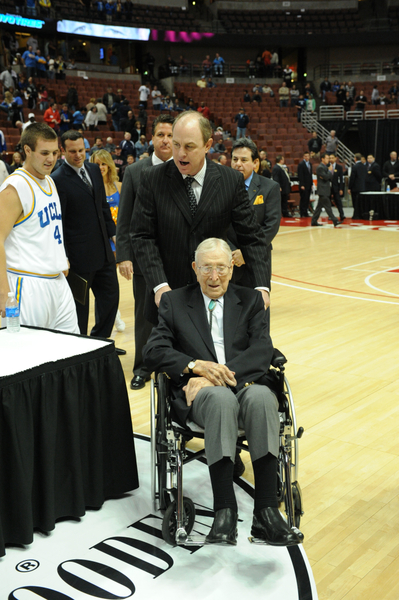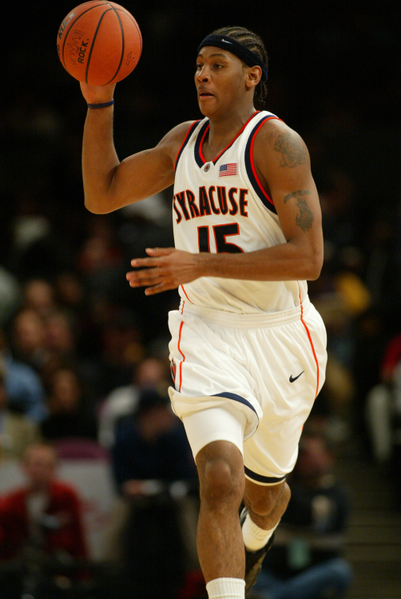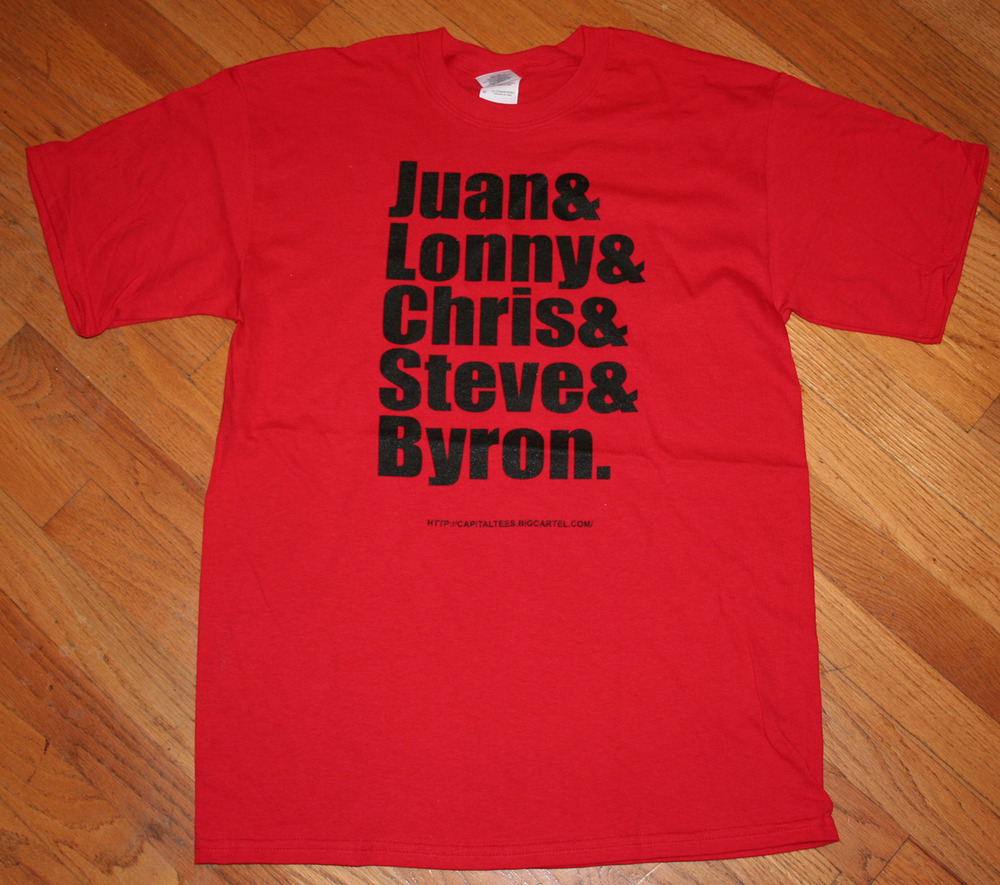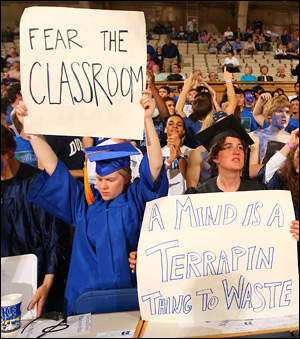Team of the 2000s: Wrap-Up and Honorable Mention
Posted by rtmsf on August 23rd, 2009Direct Links to the Top Ten.
1. UNC
2. Kansas
3. Florida
4. Duke
5. Michigan St.
6. UConn
7. UCLA
8. Memphis
9. Syracuse
10. Maryland
Intro. Welcome back. We wanted to use this post to wrap up the loose ends with an endeavor such as this one. Let’s talk about our methodology, the teams who were easiest/most difficult to place, the Memphis quandary, and the teams who were on the outside of the top ten looking in. As always, feel free to disagree in the comments.
Defending Our Methodology. One of the more interesting things about releasing these rankings has been the reaction from various fan bases. Some have been very measured in their response and criticism (such as the people in Lawrence, Kansas) while others have been a little more vitriolic (fans of another program in the center of the country). Most of the criticism has been directed at our methodology. There seemed to be quite a bit of confusion on this, so let’s clear it up immediately. Some people have misinterpreted our table (below) as if the listed criteria were all considered totally and equally in how we ranked teams. Nothing could be further from the truth – rather, the table was intended to be used as a tool showing the universe of relevant statistics that our panel might find useful when making their decisions. There was no formula that a panelist was obliged to follow – instead, each panelist had complete discretion to consider or ignore any statistic he deemed important (or irrelevant). Once each panelist submitted his list, we then took a holistic view of the world when determining where to rank certain teams. Obviously we all considered winning percentage, NCAA Tournament success, conference achievements, etc., but in varying degrees. That’s what makes these debates work – while one panelist may think that the NCAA Tournament is all that really matters and wants to weight teams almost exclusively on that metric, another panelist may want to give more substantial weight to the regular season. Here’s the thing, though – reasonable minds always differ, and both conclusions are completely ok. We believe that this sort of subjective analysis – review the available stats, pre-rank a list, reconvene to discuss, finalize the rankings – gives such a ranking system more credibility than simply weighting and re-weighting a formula until everything “feels” right. For those of you who wanted a completely “objective” ranking system… well, here’s an example we did last spring that shows how the BCS formula would have applied to the NCAA Tournament. Hint: F4 participants Villanova and UConn wouldn’t have even been invited to the Ball. In sum, we think that our methodology resulted in a solid, defensible list of the top ten programs of the 2000s. Not everyone can be happy, but we’re comfortable with the results.
Hardest Teams to Peg. There were three teams that the panel had the hardest time nailing down – #4 Duke, #5 Michigan St., and #8 Memphis. Both Duke and MSU received a #1 vote in our initial analyses, although to be fair, those were outliers among the panel. Memphis was equally contentious, with half of the panel initially placing the Tigers in the top seven, while the other half didn’t even have them ranked at all. It probably makes sense that we’ve received the most criticism based on these difficult-to-peg teams.
Easiest Teams to Peg. On the other hand, the top three teams – #1 UNC, #2 Kansas, #3 Florida – were unanimous in order (although not in ranking). Every panelist rated those three in the same order relative to one another, and the lowest any of the four teams were rated was fourth. Interestingly, criticism died down on the placement of these teams. Perhaps our panel was representative of what Average College Basketball Fan would choose as well?
What About Memphis? After the news that the NCAA vacated Memphis’ 38 wins and title appearance from the 2008 season, there was some buzz about what we should do with our list. By our estimation, Memphis was rated as the #8 program of the 2000s, but if we removed that year, they most undoubtedly would have dropped out of the top ten. After some internal discussion, we’re unwilling to go there. There are a couple of reasons for this. First and foremost, we don’t want to. We watched Memphis play its way into the national finals, we saw Derrick Rose clang his first FT with nine seconds left, and we remember the shocked look on Calipari’s face in the interview room afterwards. We also remember Michael Redd’s shooting in 99, Marcus Camby blocking everything in sight in 96, C-Webb calling timeout in 93, and several other vacated performances over the years. Those games and moments happened. They’re seared into our memory. The NCAA can vacate whatever it wants, but we’re not going to join forces with them in their legal fiction. Which brings us to our second point on this topic. The NCAA’s application of these penalties is so wantonly inconsistent that if we gave credence to this one while ignoring such wholesale violations known to the general public – Sam Gilbert at UCLA and Reggie Bush at USC should immediately come to mind – that we’d be doing our readers a disservice. We recognize that cheating at some level happens nearly everywhere, but our stance is that if the NCAA doesn’t catch it and punish the school prior to the games affected, then we’re not going to join them in their after-the-fact erasures. Sorry. Memphis stays at #8.
Honorable Mention (in no particular order).
- Pittsburgh. Pitt was an oddity when it came to evaluating them for our countdown. There was considerable variance among the voters as to where the Pitt program landed, and because of that they were one of the first teams to whom we awarded this “honorable mention” status. Still, after the votes had been submitted, in the ensuing discussion it wasn’t that hard to move Pittsburgh out of the Top 10. Make no mistake, it’s been an excellent ten years for the Pitt program, but in order to make a decade’s-end Top 10 list there are certain things you simply HAVE to get done. Of their eight trips to the NCAA tournament, six of those saw Pittsburgh with at least a 4-seed (five of them were #3 or better). The result? Zero trips to the Final Four and only one Elite Eight. It’s not like the Panthers didn’t have their chances. True, it’s not easy to lose a coach like Ben Howland (who took Pitt to the Dance in 2002 and 2003) and the program deserves credit for a hire like Jamie Dixon, who didn’t miss a beat. And it’s not easy to lose to a Howland-coached UCLA team in 2007 in a #2-vs-#3 seed Sweet 16 game when you’re playing them in San Jose. But if you want to be considered among the elite, you HAVE to beat 10th-seeded Kent State in the Sweet 16 when you’re a #3 (2002). You HAVE to beat Pacific in the first round of 2005, even if you are on the low side of an #8-vs-#9 game. You CANNOT LOSE to 13th-seeded Bradley in the second round when you’re a 5-seed (2006). And perhaps the most painful — when you’ve earned a 1-seed after an incredible 28-4 season playing in the Big East, when you’re playing in your first Elite Eight in 35 years, you MUST beat the 3-seed, even if it is an in-state rival in the form of a very tough-nosed Villanova squad. Dixon faces a bit of a rebuilding task in the upcoming season, but they ended the 2000s strong. It’s because of that strong finish, that trend of improvement, that people – especially Pittsburgh fans – may be surprised to not see the Panthers in the Top 10 for the last decade. As we start the new decade with the upcoming season, Dixon has the Pittsburgh program poised to move into that elite category. As far as the last decade, though, they came up just short.
- Illinois. On three of our personal Team of the 2000s rankings, Illinois barely missed the cut, meaning if the Bruce Weber-led 2005 squad managed to topple North Carolina for a national championship, they’d likely be included in the top ten. Illinois has also flamed out a bit at the tail end of the decade, finishing with a losing record in 2007-08 (16-19) before rebounding to a 24-10 mark in 2008-09 and eventually falling victim to a 12-5 upset by Western Kentucky. Bill Self and Bruce Weber have built a phenomenal program throughout the decade, though. The 2004-05 team featuring Deron Williams, Luther Head, Dee Brown and James Augustine was one of the top teams of the 2000s, flirting with an undefeated mark until Ohio State knocked them off in Columbus, then pulling off one of the most sensational comebacks in NCAA Tournament history in the Elite 8 against Arizona. Illinois has tied or won the Big Ten three times in the 2000s and finished as high as second three more times. What holds Illinois back from garnering a spot on the list? They haven’t reached the second weekend of the NCAA Tournament or won a conference title since that special 2004-05 campaign. Borderline teams have experienced more success in March, both in the Big Dance and in conference tournament play, than Illinois. For example, Maryland has two Final Fours, a national title and never finished with a losing record in the decade. Illinois hasn’t won the Big Ten Tournament since 2004-05. With packed recruiting classes ahead and a top-notch leader in Weber, Illinois will look to turn around a program that hasn’t been nearly as feared since watching Carolina cut down the nets on that fateful April night four years ago.
- Gonzaga. The Zags undoubtedly were the most successful mid-major of the decade (moreso than Xavier and Butler), but their overall profile simply didn’t have enough juice to vault Gonzaga into the top ten. They dominated the WCC, winning the league eight times en route to an average of 26+ wins per year, an outstanding 80% winning percentage, and ten straight NCAA appearances. But when it came to the NCAAs, Mark Few’s squads were only able to make it to the Sweet Sixteen four times. And how many times in the decade were they able to advance past the third round? Um, try zero. Nevertheless, we believe that Gonzaga rates a tick higher than other such notable programs as Louisville, Wisconsin, Arizona and Oklahoma (all of whom made one F4) because they were so consistently good despite their scheduling limitations. The worst Zag team (2006-07) still had 23 wins, and as a result of the weaker schedule of the WCC, their average NCAA seed was easily one of the lowest on our list. Yet, as we all know, Gonzaga has tried to load up on high-impact RPI games during the nonconference slate, and we give them credit for that. Fans of the other programs may quibble with this selection, but we can live with including at least one mid-major for consideration as the Team of the 2000s, and Gonzaga is our choice.
- Arizona. The obvious question here for Wildcat fans is how can a team that made the NCAA tournament every year for the past decade (and 25 straight if you don’t take away their vacated 1999 appearance) not be considered one of the top ten programs of the 2000s behind four teams that failed to make the tournament twice, two teams that failed to make the tournament three times, and another team that failed to make the tournament four times? While the answer probably won’t satisfy Wildcat fans, it comes down to a few key things for us:
- Barely having a winning percentage at 70% despite playing in the Pac-10. Save the whining, West Coast people. The Pac-10 has only been one of the best conferences in the nation once in the past decade (2008 comes immediately to mind).
- Averaging 1.7 wins per NCAA Tournament appearance, which is lower than any other team in the top 10. The only team that they are close to is Syracuse and the Orange have a national title (wouldn’t be in the top 10 without it).
- Mediocre performance in the Pac-10. The Wildcats had 2.5 regular season conference titles (one being a split title) and 1 postseason conference title (since it was started in 2002). Like we said before, the Pac-10 might have the most attractive co-eds in the nation (although the SEC has a strong case), but the Pac-10 pales in comparison to the ACC, Big East, Big 12, SEC, and the Big 10 over the past decade in terms of the quality of their basketball teams.
- You could argue that the Wildcats got lucky with many of those NCAA tournament bids, most notably two years ago when they got in ahead of an Arizona State team that had a very strong case for being in above their rival.






























